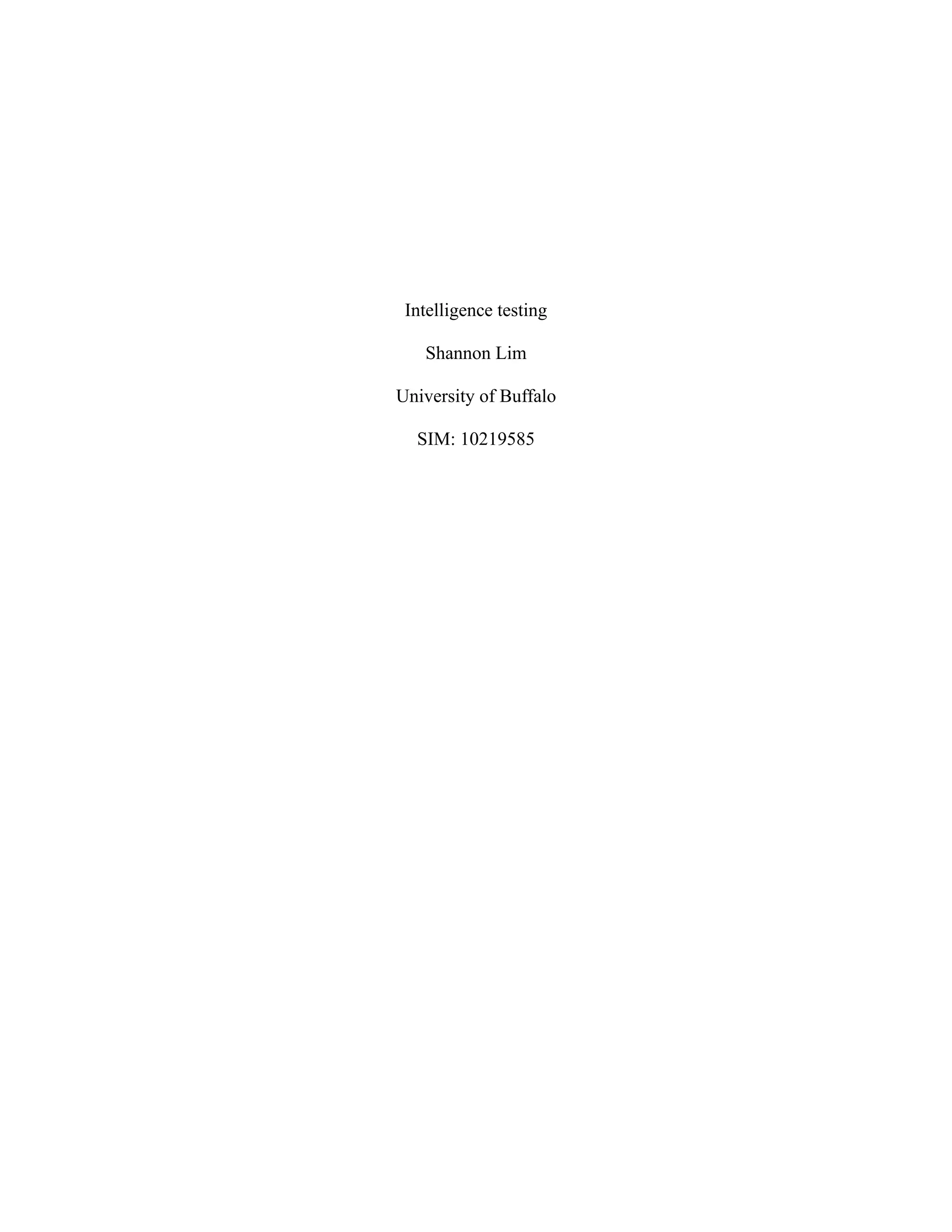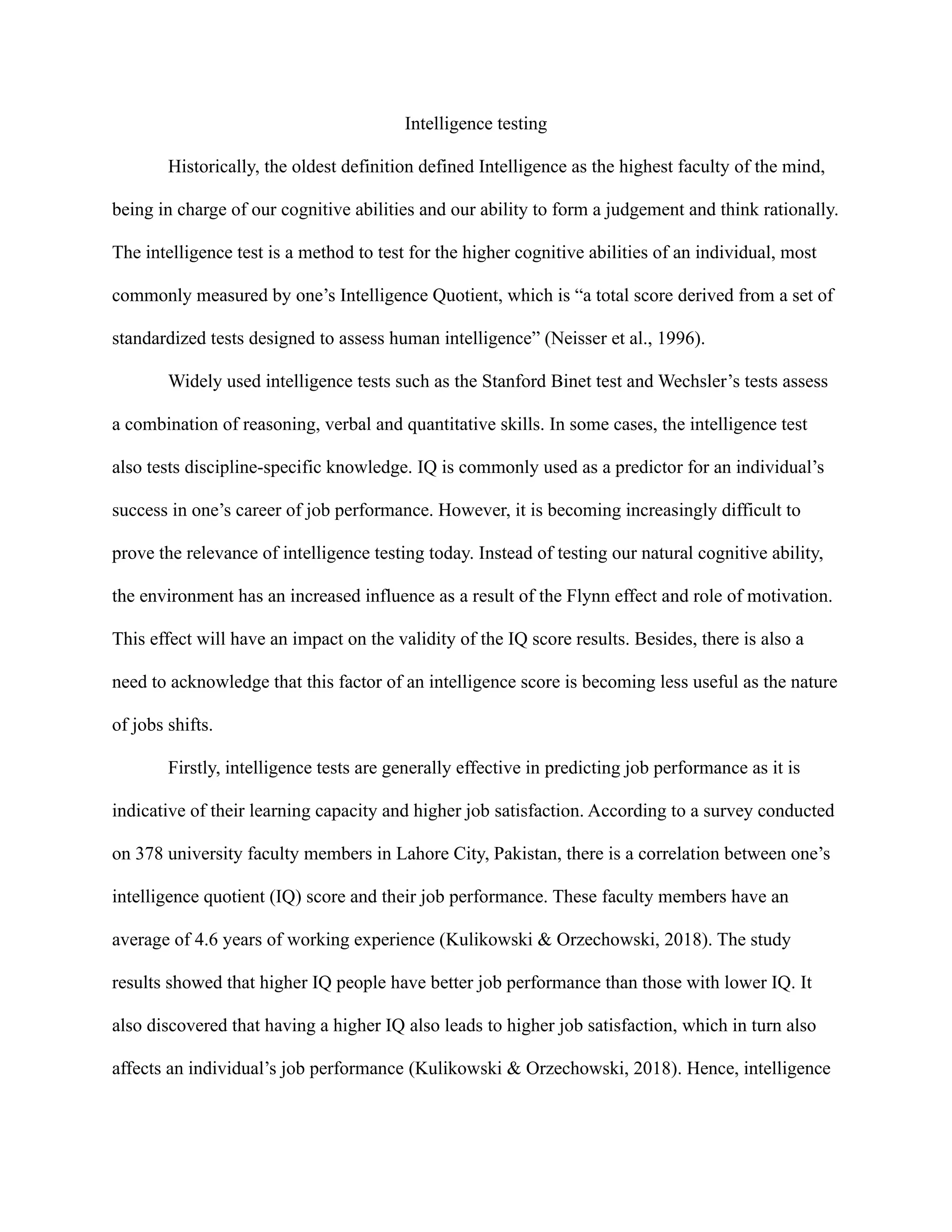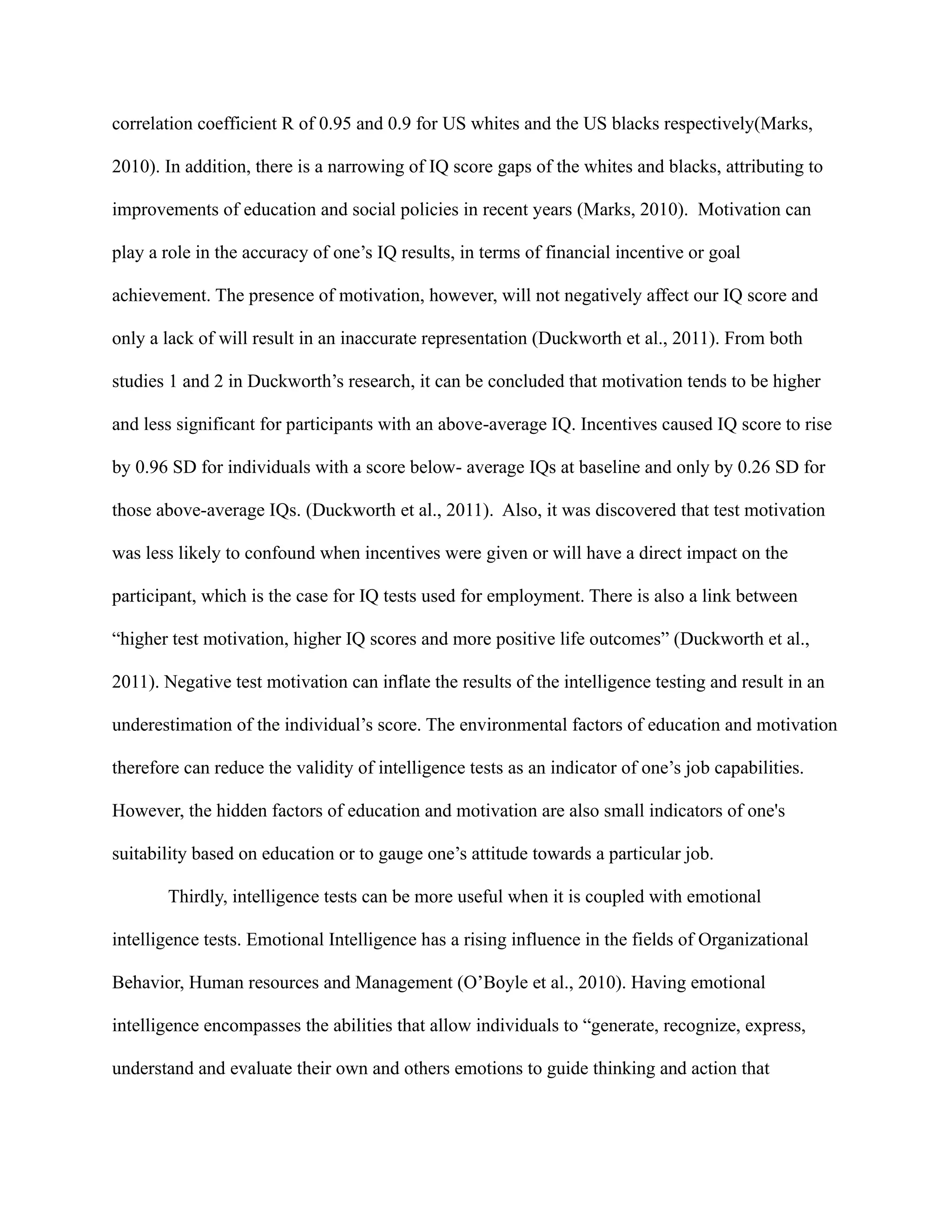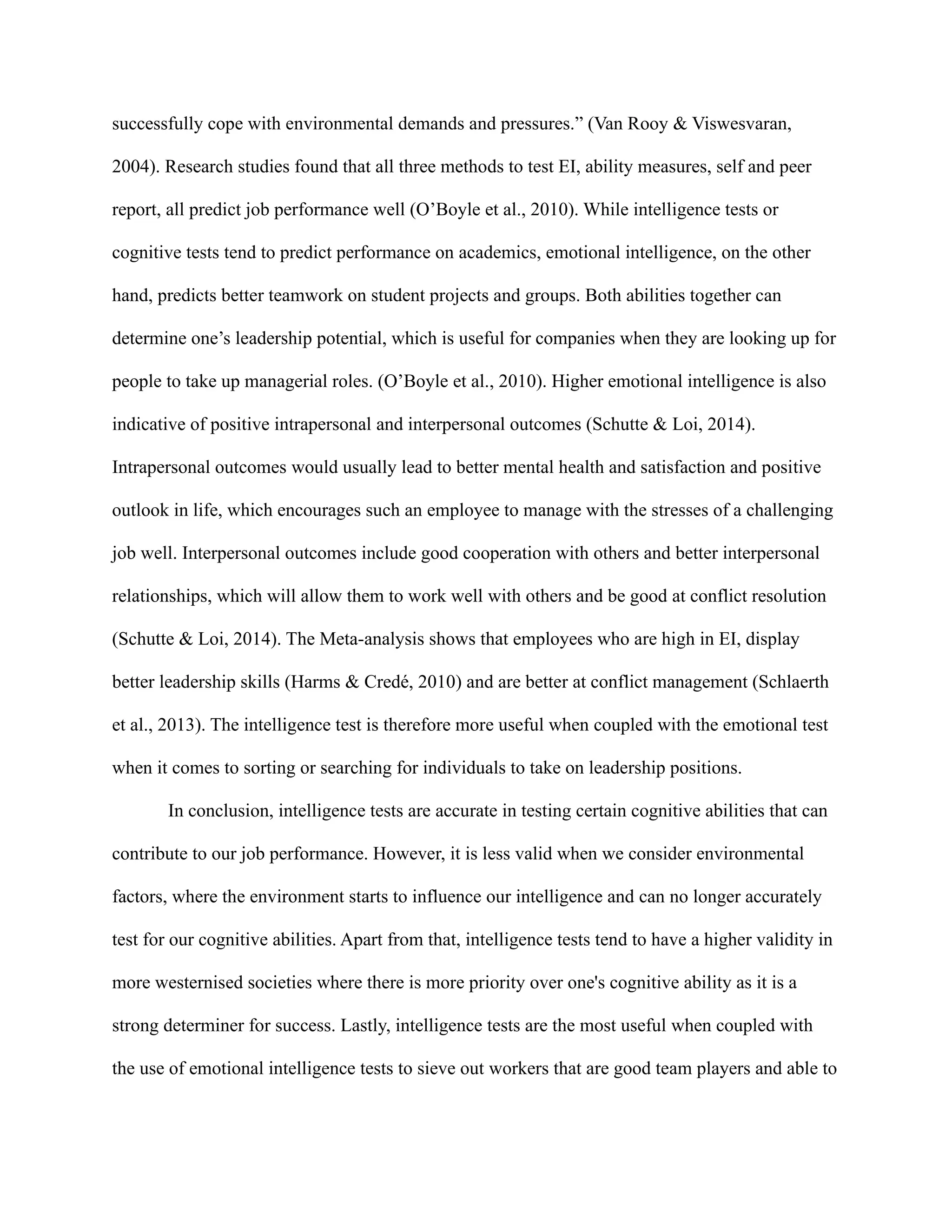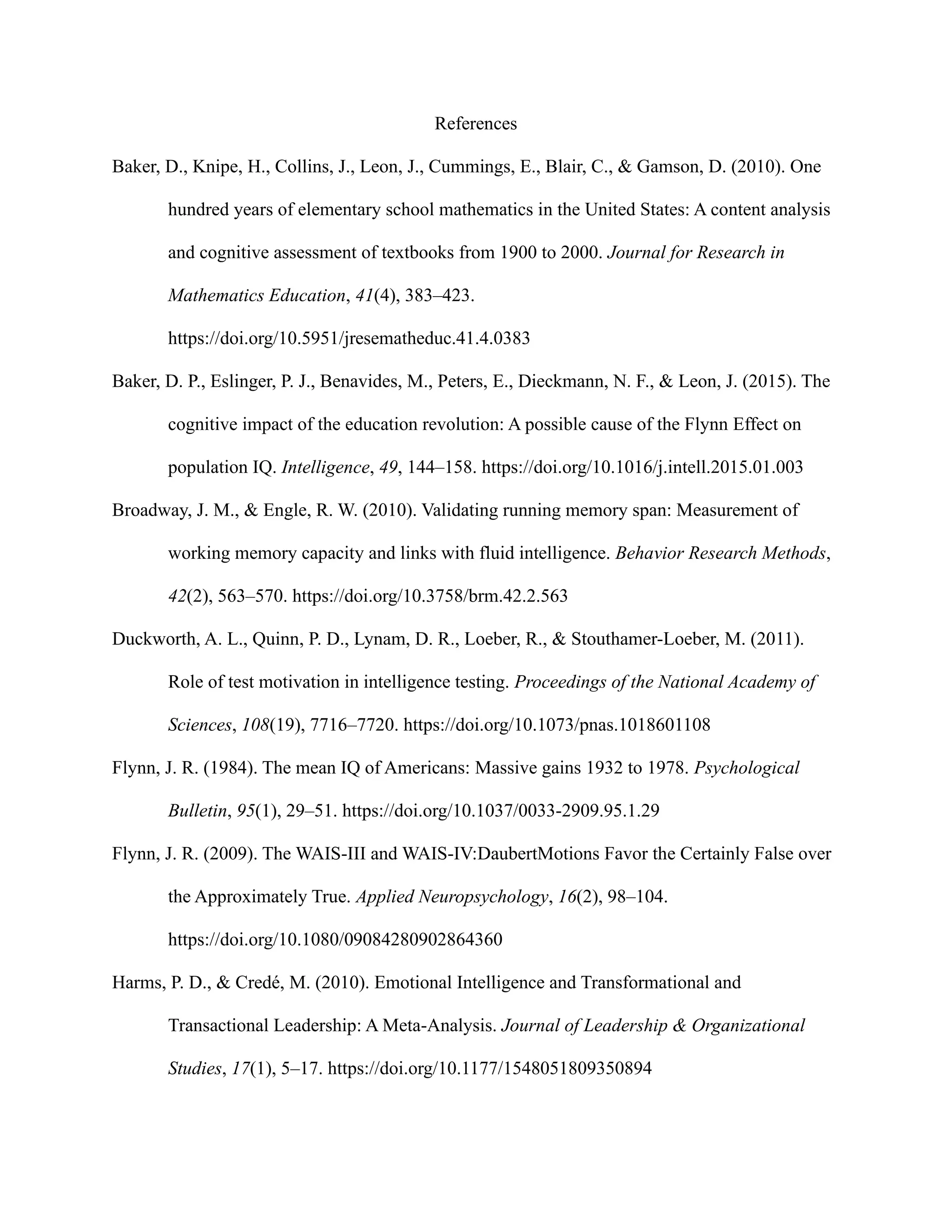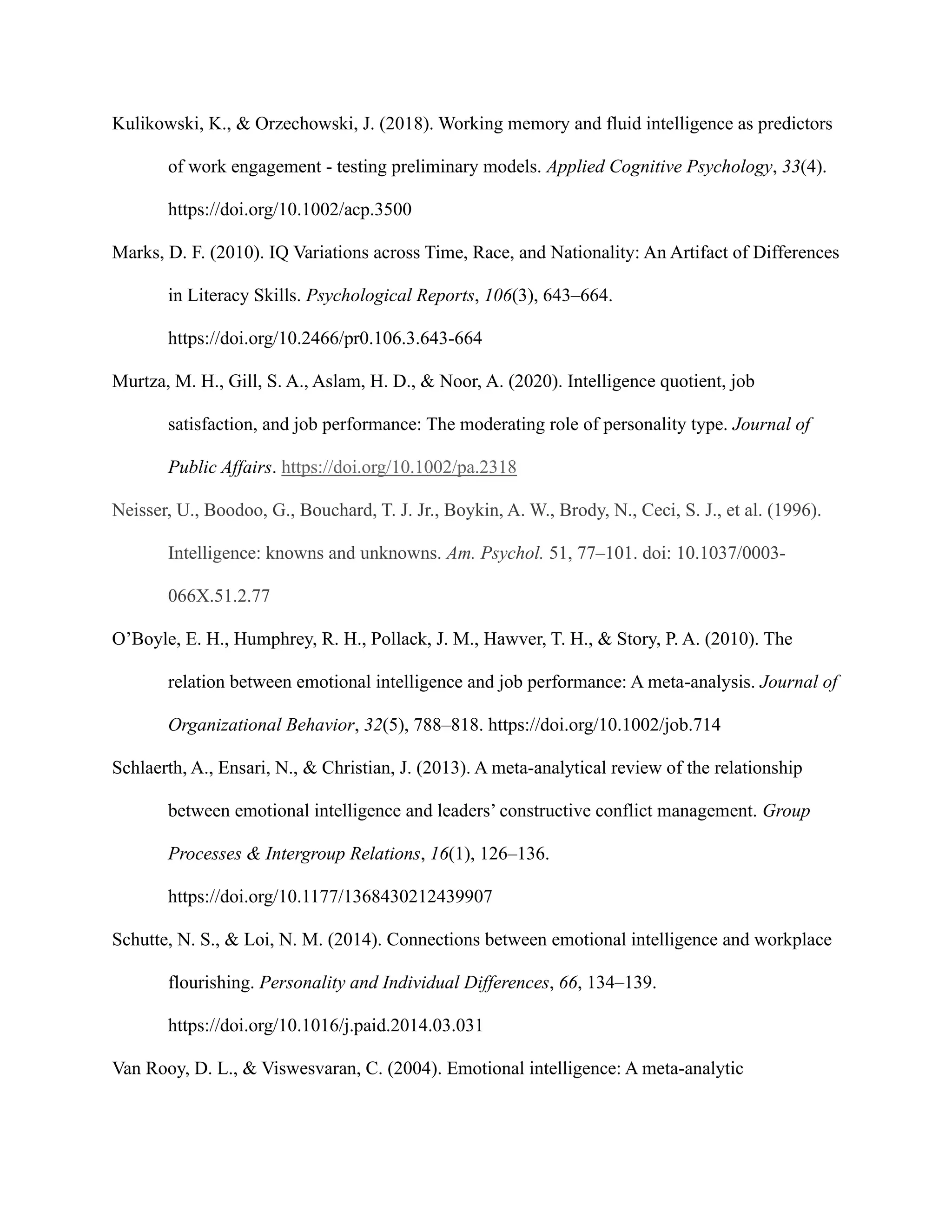Intelligence testing measures an individual's cognitive abilities and intelligence quotient (IQ). While IQ scores can predict job performance to an extent, the validity of IQ testing is limited by environmental factors like education and motivation that influence scores. Specifically, the Flynn effect shows that IQ scores have been rising over time due to better education. Additionally, emotional intelligence tests should be considered alongside IQ tests, as emotional skills are also important predictors of job performance, leadership ability, and satisfaction. Therefore, IQ alone provides a limited view and should be one part of a broader assessment.
